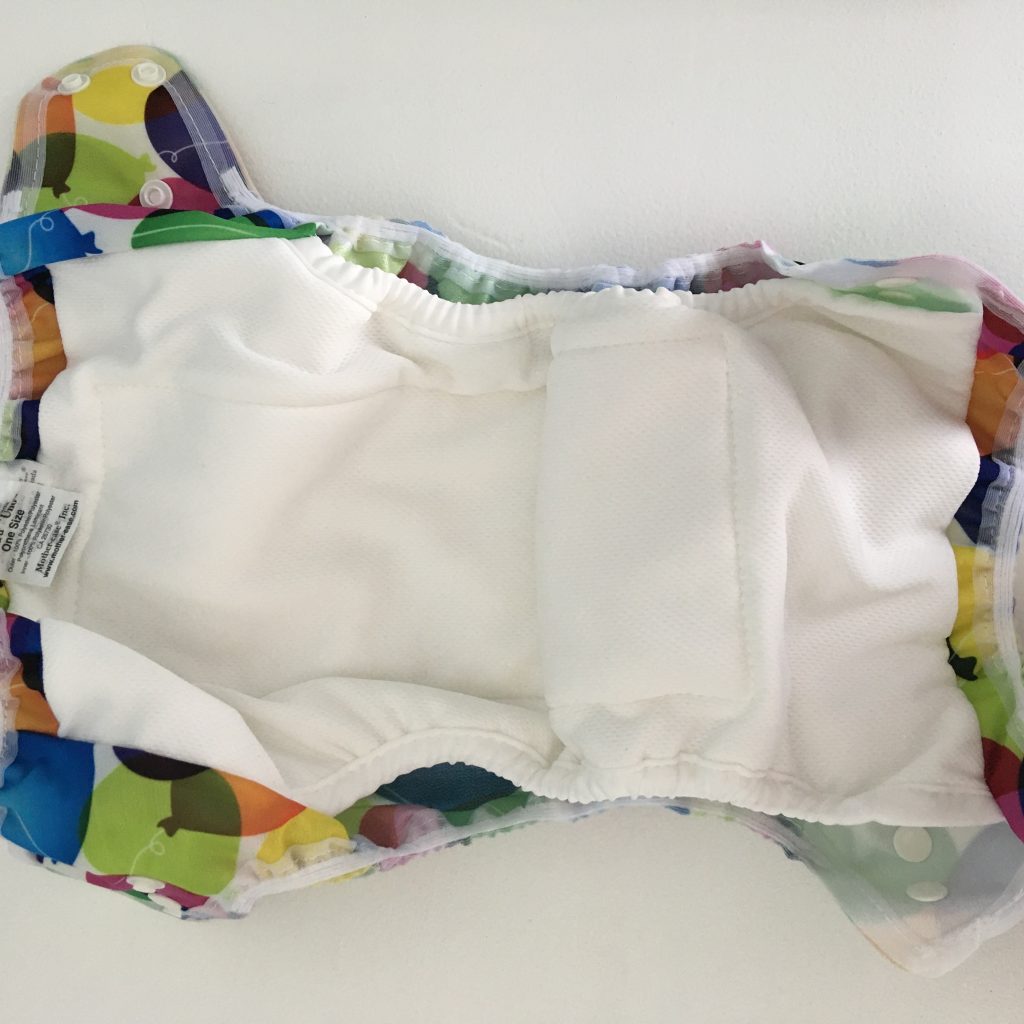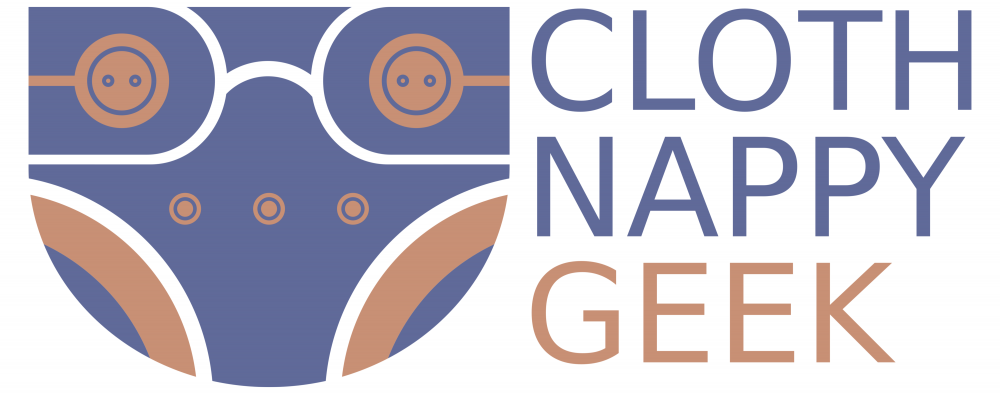You might hear gussets being talked about and wonder what on earth the difference is. Most nappies have a single gusset, i.e. there is the normal leg elastic for containment and fit but nothing else. If you want to explore leg elastics in more detail, then take a look at the leg elastics page.
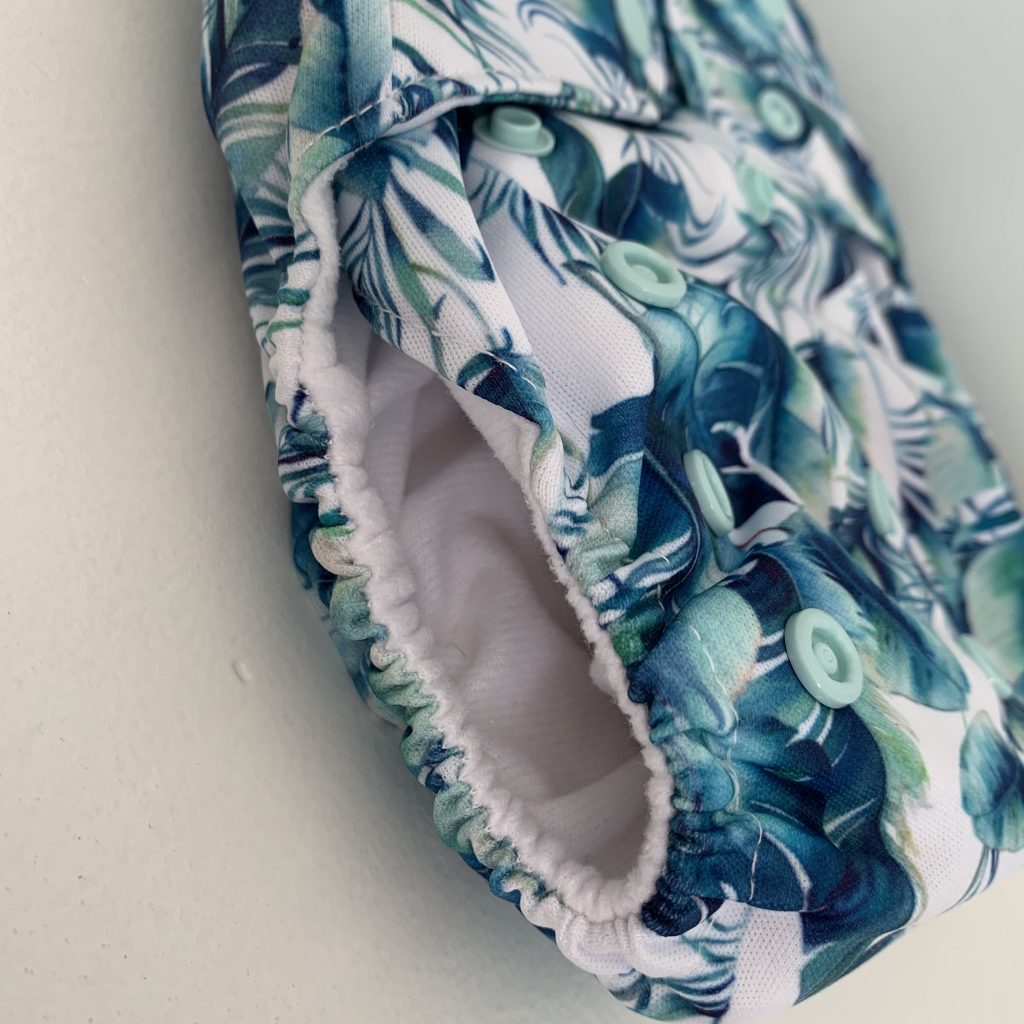
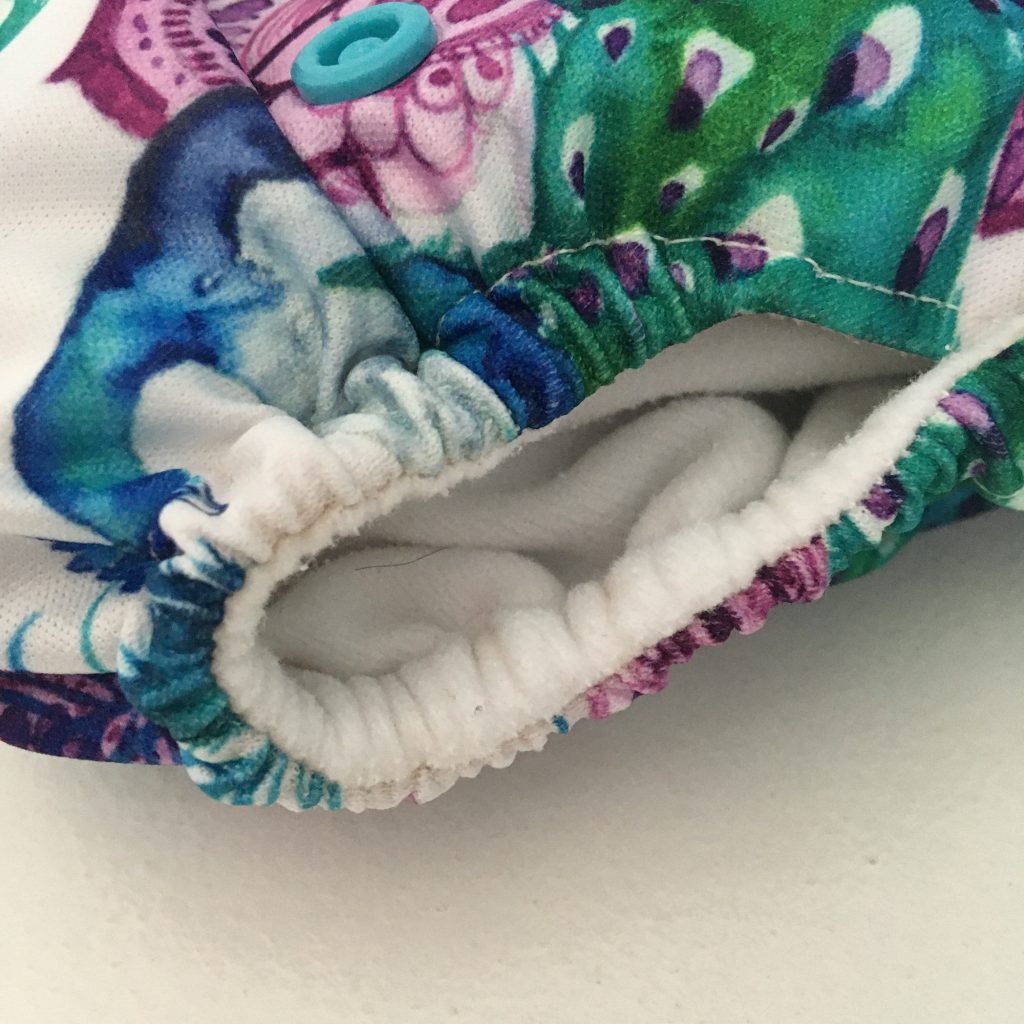

Some nappies feature a double gusset. This gives an extra barrier of protection, not quite as good as a two-parter system, but in theory is better than a single gusset.
I would say double gussets are particularly useful on younger babies, especially before weaning when even solids are something of a liquid, and you might struggle to get a good fit on tiny legs. But I personally don’t see their value as much post-weaning. But hopefully this has been a useful explanation between the differences.
There are two options for the design of a double gusset, either exterior or interior.
External double gussets
My unscientific research says that the majority of wraps have an external double gusset. It’s also a feature that appears on many ‘day’ nappies too.
A double gusset is, as the name suggests, an extra barrier to reduce the likelihood of leaks. It is located around the leg area. For external double gussets alongside the normal leg elastic is a small piece of PUL and then another set of leg elastics.
The pros are increased containment as it creates an extra barrier to stop poo escaping. With wraps it also reduces the likelihood of the absorbency underneath from sticking out of the leg elastics and causing wicking.
The downside is that introducing an additional piece of elastic against your baby’s skin increases the chance of sock marks. On some day nappies the lining won’t be present all the way to the edge, stopping at the first external gusset. In my experience this exposed PUL inside can lead to poo leaking through the PUL with pre-weaned babies.
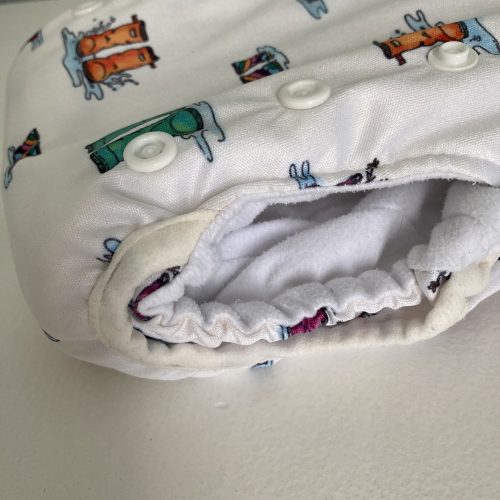

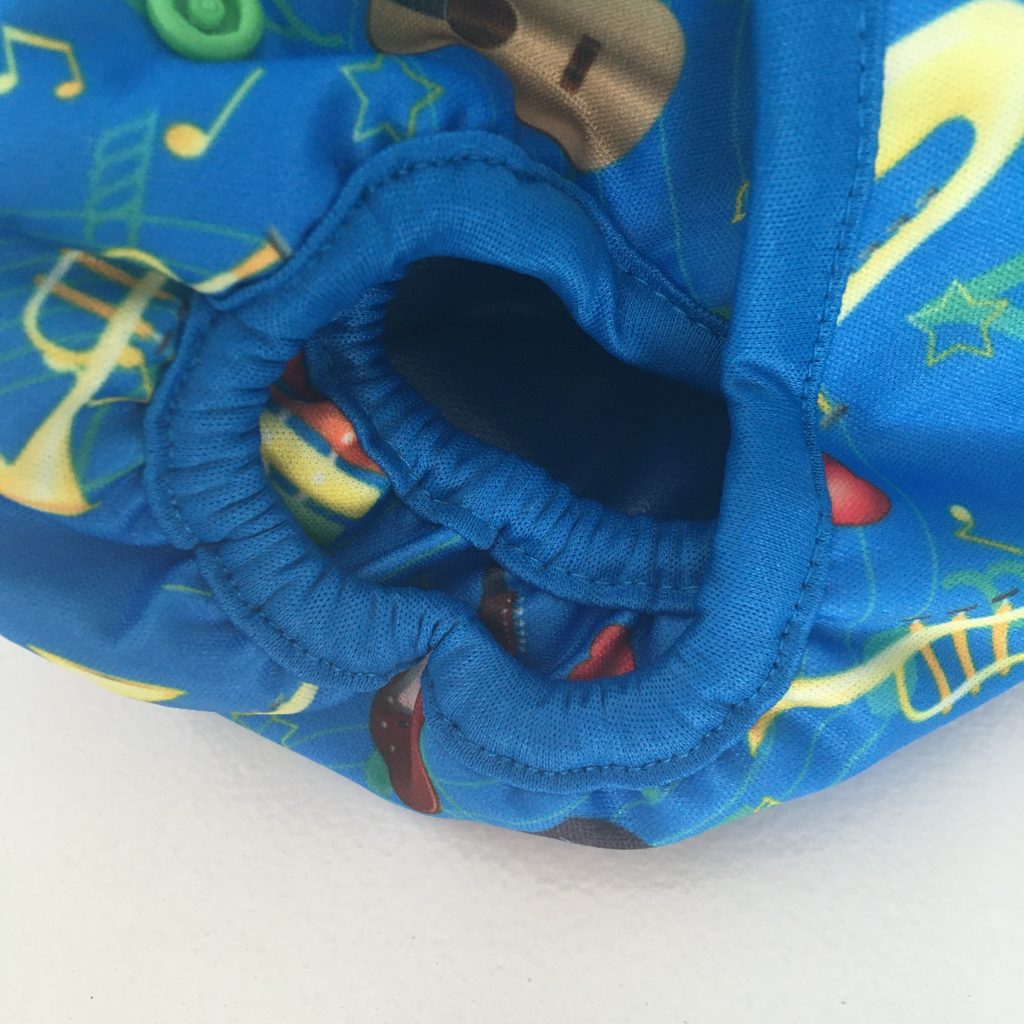
Internal double gusset
An interior gusset is an additional line of elastic inside the nappy. From the outside the nappy will appear to be standard. It is either created by sewing a gathered line into the lining material (standard internal double gusset). Or by adding elastic to the edges of the absorbent layer (secondary gusset).
Overall I think internal double gussets have their use in specific cases, otherwise I personally just find them annoying to remove solids from.
Standard internal double gusset
Mostly commonly found on pocket nappies, this is an extra piece of elastic that has been stitched into the lining fabric.
It helps keep solids in the centre of the nappy, especially useful for newborns. It also creates a ‘wall’ to reduce run-off from flooding wees, allowing liquid to soak in. Flooding wees can occur especially with fleece-lined nappies.
However it can make removing solids more difficult as it can get stuck in the creases. If you’ve started weaning your baby you will need to remove solids before washing. The elastics create an extra sock mark on your baby.

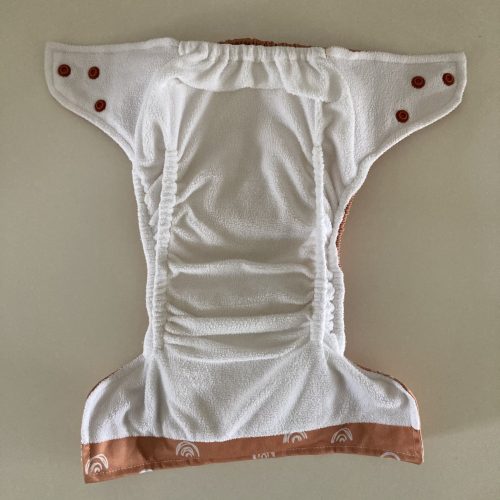
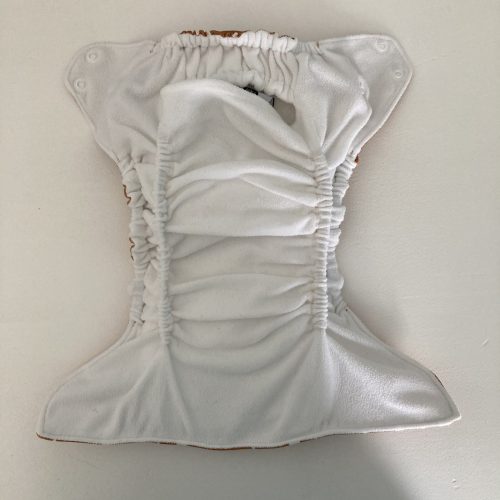
Secondary gussets
I’ve sort of invented this term myself, whilst I work about over complicating things, I didn’t feel comfortable using the same terminology for two different elastic styles.
A secondary gusset is a second set of elastics, located inside the nappy. Rather than being created by modifying a normal nappy with additional elastic, this gusset comes courtesy of the insert. The insert (normally of an AIO or Ai2) will have an elasticated edge, separate to that of the shell. Thus creating a secondary gusset inside the nappy.
In some cases where the shell already has an external double gusset, you’ve now effectively got a triple gusset.
The benefits are, again, improved containment. This feature is particularly useful with Ai2s that have a wipe clean shell. The elasticated insert might prevent the shell from being soiled so you can continue using the shell. It’s also useful for wees in Ai2s as it will hug the insert close to your baby, stopping wee directly hitting the PUL (or gathering in puddles) which would likely result in leaks.
But if the elastic doesn’t hold the poo, and you’re post-weaning, then poo removal is not going to be straight forward as it will be in multiple places in the nappy. Plus there will again be extra sock marks on your baby and limited options to adjust the fit if these elastics are too tight.

